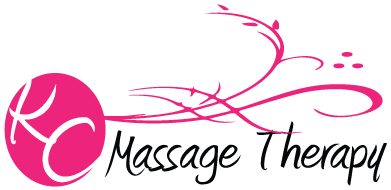What's the difference between Swedish and Deep Tissue Massage and which is right for me?
Everyone enjoys a relaxing massage, but are you familiar with the different types of massage therapies and their benefits?
Today, we’re going to look into the difference between Swedish and Deep Tissue Massage, their benefits and techniques, so you can determine which one is right for you.
Swedish Massage focuses on improving your blood and lymph circulation and relaxing superficial muscles (muscles at the surface). According to Robert Noah Calvert, founder of Massage Magazine, “Swedish massage didn't really originate in Sweden. In Europe, it is generally referred to as classic massage, which was originally organized and described by Dutch practitioner Johan Georg Mezger.”
When I perform Swedish massage on my clients, I use a specific set of massage techniques: Sliding movements (called effleurage); kneading movements (called petrissage); rubbing or friction; and percussion or vibration. I traditionally also include both passive and active joint movements, wherein I gently stretch and bend your joints to improve your flexibility and pliability.
Spa treatments such as aromatherapy, hydrotherapy, body wraps, chair massage and pregnancy massage are subcategories of Swedish massage as are medical massage, manual lymphatic drainage, infant and children massage and geriatric massage.
A Swedish massage increases the flow of oxygen in the blood and releases toxins from the muscles in your body. It also shortens the recovery time for a muscular strain.
The beauty of my Swedish massage is that it simultaneously stimulates the skin and nervous system to soothe your nerves. My clients enjoy the relief it brings from both emotional and physical stress and this massage is a staple in nearly every stress management program. There are so many therapeutic benefits to the body: it flushes lactic acid, uric acid and other types of metabolic wastes out of the tissues of your body.
Deep tissue massage address issues like small muscle injuries or chronic muscle problems. Deep tissue massage is an excellent way to handle a sports injury or even whiplash. Often times, physicians prescribe deep tissue massage for Fibromyalgia pain or Osteoarthritis. It also helps with correcting posture problems.
Deep tissue targets three central muscular regions, specifically: The neck area, the back, and the fascia (connective tissues). The Deep Tissue Massage got its name because it is really intended to penetrate deeper into the underlying muscle layers. The massage is meant to carefully ease out strained muscles below the surface and is rather more intense in nature than the softer Swedish Massage.
In order to decide whether a Swedish Massage or a Deep Tissue Massage is more appropriate for you, you will need to ask yourself exactly what you are expecting as a result of the massage. For example, if you are looking for an overall relaxing massage that eases the tension in your entire body, then perhaps a Swedish Massage is what you’re after.
However, if you have specific pain or tension that needs to be addressed, then a Deep Tissue Massage is probably the direction we’ll take. In some cases my clients and I decide a combination of the two is the most appropriate choice.
If you are still having trouble deciding whether a Swedish or Deep Tissue Massage is best for you, please feel free to give me a call. Together we can discuss your expectations from your massage, decide together whether a Swedish Massage or a Deep Tissue Massage would be most appropriate.
